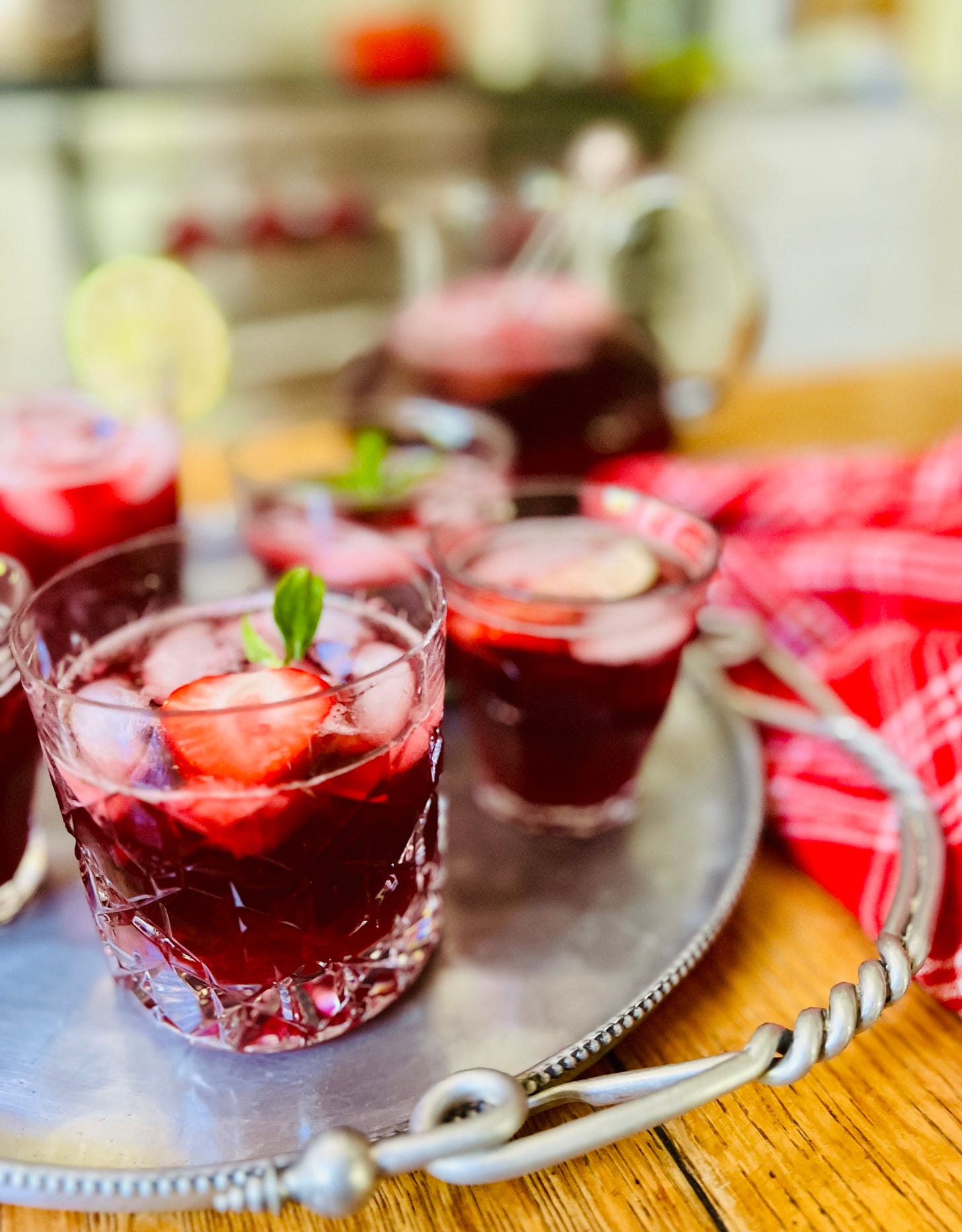Red Drinks for Red-Hot Days - No. 291
A blushing strawberry lemonade, festive Juneteenth style hibiscus and pineapple punch, and a strawberry and hibiscus tea + the easiest peach pie ever
IF YOU GLANCE AT THE SCORCHING WEATHER map, you’ll see red.
Temperatures across America and much of the world have soared to their highest marks in years. So it was good timing, perhaps, that I was concocting refreshing red drinks this week—a strawberry lemonade as well as two hibiscus e…




